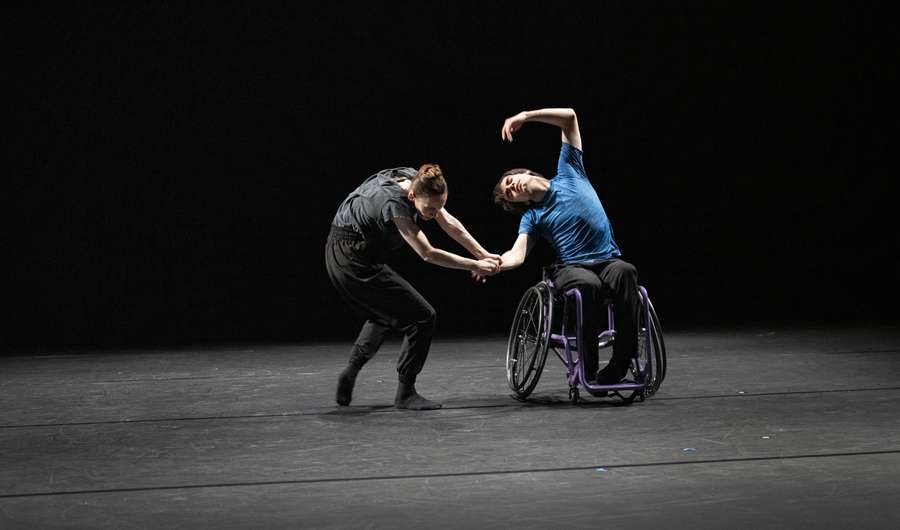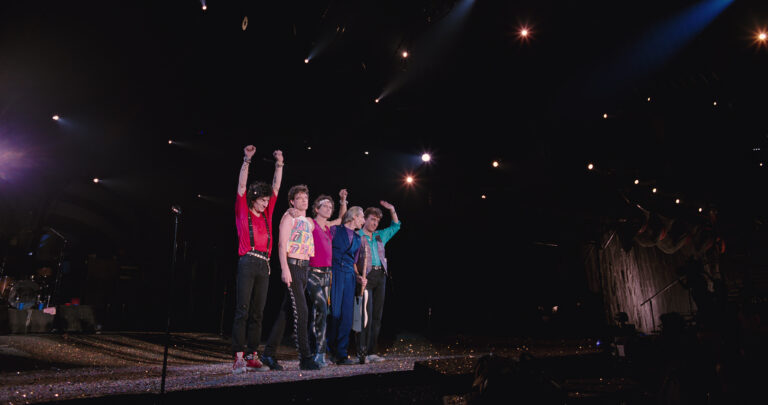Differently abled dancer Joe Powell-Main is taking this summer’s Greenwich and Docklands International Festival by storm, performing in a ground-breaking Royal Ballet production of Sleepwalker. A retelling of La Sonnambula, the piece is directed by Royal Ballet principal dancer Alexander Campbell.
“I was intrigued by the opportunities that the story presented and was keen to explore a way of moving that was interesting and could capture the essence of a fascinating phenomenon,” Alexander tells the South Londoner. “I had wondered whether the unique qualities and skillsets of wheelchair dancers might lend itself well to this idea and when I saw the work that Kristen had created for Joseph Powell-Main alongside dancers of the Royal Ballet for the Paralympics GB Homecoming I was convinced that it was an idea worth pursuing.”
Based in Wales, Joe has been dancing since age 5, and went to the Royal Ballet School (RBS) for four years, where he performed with the Royal Ballet in The Nutcracker, Matthew Hart’s Peter and the Wolf at the Royal Opera House Covent Garden, and understudied and performed in the world premiere of Antonia Castilla’s Legado.
During his fourth year of training, Joe developed injuries after a prolonged period of growth and underwent surgery on his left knee, which led to further complications.
At the same time he was also involved in a serious car accident and acquired a disability, losing the use of his left leg, which meant he had to leave RBS. He stopped dancing for three years. “It was quite a challenging process but with support from family members, I found my way back to dance,” he says. “I’d love to see more dancers with disability working with different companies and I think people are interested in that.”
Joe found his way back into the field through ballroom and Latin dance. “My Mum had seen a leaflet for dancers that use wheelchairs and I started going to the nearest classes, which were in Manchester,” he recalls. “The other dancers in the class were aware of how to work things for themselves, they didn’t hide their disability and weren’t ashamed of that. I had to watch how they did things. You don’t always have someone showing you how you can use a wheelchair so I gained a lot from watching others.”
Coming back to classical ballet has been a journey for the dancer; the Paralympics GB Homecoming was one of the biggest performances of his career. “When I stopped dancing I found it difficult to look at anything to do with ballet. I was so upset by it so I hid all my books and things away for a while. I was quite nervous coming in and doing work with the Royal Ballet but what’s good is things have changed. There’s been a massive evolving of the entire dance industry as a whole towards inclusivity.”
“There’s not many other dancers with disability in the classical and contemporary world. It’s definitely a challenge to adapt that to a wheelchair because I was used to standing. I’m lucky I can still use my right leg but the physics of a wheelchair come with certain limitations so I had to do a lot of discovering for myself.”
Joe’s sister is a ballet teacher and an ongoing source of support and inspiration to him. “People took a chance on me. I did a degree in dance at the Arden School of Theatre in Manchester and they recognised they’ve not had a student on the dance floor with a disability and were eager to learn about that and see what’s possible. It’s good because I have the support of others,” he says.
The Royal Ballet are making “massive steps forward” in seeing what’s possible for differently abled dancers, Joe continues. “It’s going to be a continuous process to break down barriers and make classical ballet more accessible,” he says. “Looking at how others do stuff was very key to seeing what was possible. I’m very lucky I have a dance chair made specifically for dancing. That’s not to say there aren’t possibilities with an everyday manual chair but having a chair custom made for me that’s lightweight and you can move it at speed, that’s really enhanced some of the stuff I do.”
“When I was younger, I kind of thought once you’d made it to a professional level that you would have learned everything but that’s not the case. Regardless of disability or not, every dancer is always learning new things you can do.”
In the past, there’s been misconceptions that classical ballet dancers are there to execute someone else’s vision but things are changing, Joe says. “In the work I’ve been doing, they’re keen for me to have a voice.”
“When I was coming back to dance, I struggled to find someone like me. So if dance companies or producers are willing to take that step to try things out, especially in bringing disability and classical ballet together, it’s going to be a big learning process, and it’s not easy, but if we can continue to have conversations and just keep an open dialogue we can tackle anything.”
Joe performs in Sleepwalker at GDIF on September 10 and 11 at 1:35pm and 3:55 in
the Columbus Courtyard, Canary Wharf.
Admission: free. https://festival.org/gdif
This article was brought to you from The South Londoner







